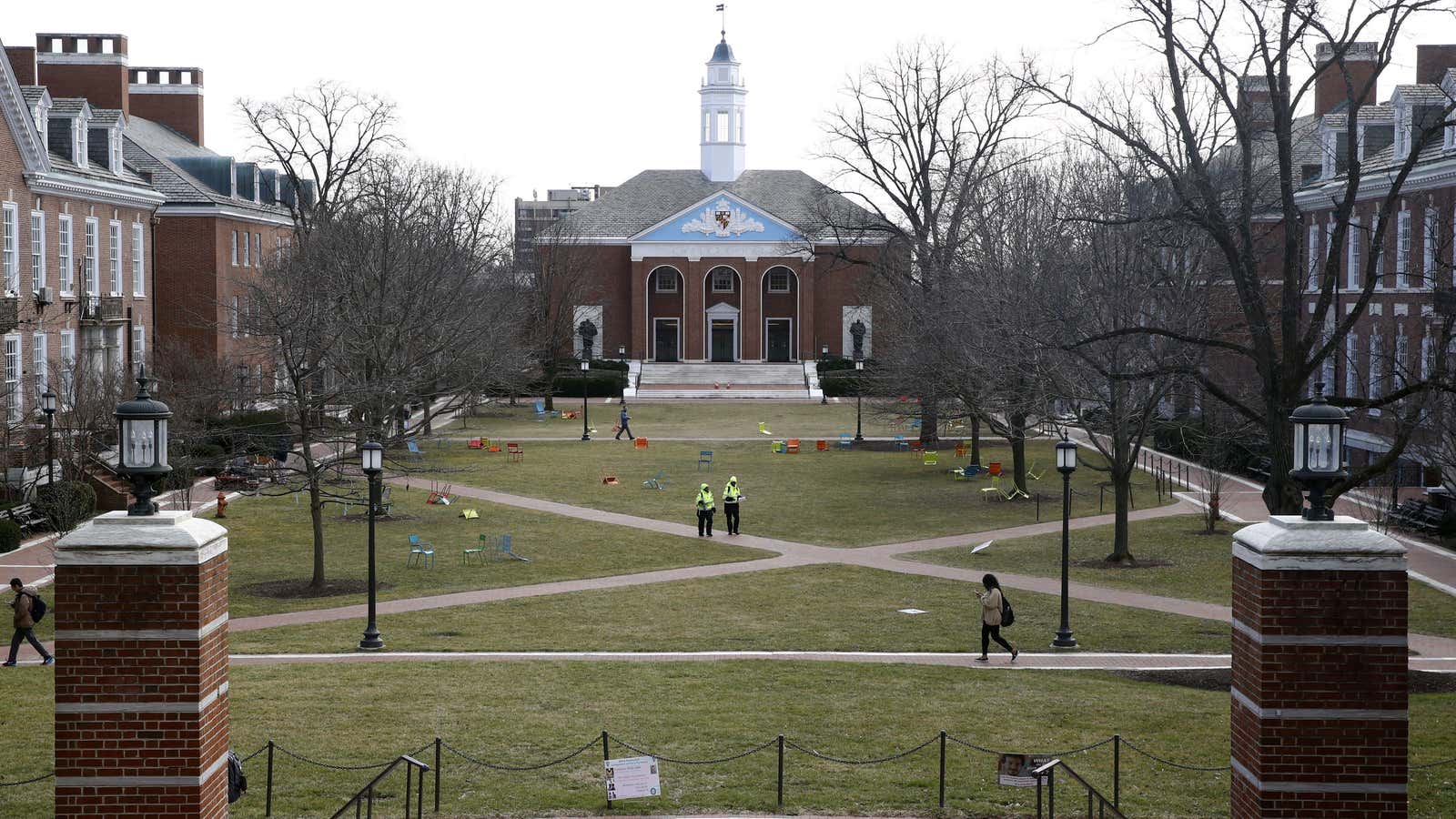Johns Hopkins University (JHU) is eliminating legacy admissions. Announcing the decision, president Ronald J. Daniels explained that when he took on his role a decade ago, he found out one in eight students was admitted because of benefits accorded to alumni. That number is now zero.
“I never became reconciled to the prevalence of this form of hereditary privilege in American higher education, particularly given this country’s deeply ingrained commitment to the ideals of merit and equal opportunity,” writes Daniels, who is Canadian.
Two of the most notorious characteristics of top US universities are their costs and selectiveness—Harvard accepts only 4.5% of applicants, Columbia 5.1%, and Yale 5.9%. Attending a prestigious college typically costs several times as much as even the most prestigious universities in the world (one year at the University of Oxford, ranked first globally in 2019, is about $12,000; one year at CalTech, ranked second, is over $52,000).
The combination of the two creates a powerful mechanism that per se contrasts with merit and equal opportunities—and in institutions that adopt legacy admission, this is exacerbated.
Wealthier students can access better preparation, and therefore have a higher likelihood to pass the selection on merit, plus they have the money to pay their fees without joining the millions who enter the workforce under the burden of student debt. And when these students have connections to alumni, their hold onto privilege is even stronger. Take Harvard, for instance: For the child of a Harvard graduate, the chance of admission jumps from 5.9% to 34%; about 14% of those admitted every year has some family link with an alumni.
This takes away from others an important chance at social promotion in a country that offers surprisingly few. Only 4% of people who were raised at the bottom quintile of income ever make it to the top one. But those chances go up to 60% after someone attains a degree from a top university (pdf).
“Ending legacy preferences is just one important step in the process of building a more socio-economically diverse student body,” JHU spokesperson Karen Lancaster told Quartz. She shared that the university actually ended legacy admissions in 2014 (except for a few cases, and only when the academic criteria were satisfied, too), but kept the decision quiet initially to have a chance to observe its impact on the student selection process.
The effects were remarkable. “In 2009, our entering class had more students with a legacy connection (12.5%) than students who qualified for Pell grants (9%),” said Lancaster. “Today, those numbers are reversed—just 3.5% of this year’s freshman class has a legacy connection to the university, and 19.1% is Pell-eligible.”
Because of a large donation it received in 2018, the university also doesn’t consider the students’ financial status when making admission decisions, and it gives grants rather than loans. “Those young people who are admitted to Johns Hopkins should arrive on campus secure in the knowledge that they were admitted on the basis of their abilities rather than the circumstances of their birth,” said Lancaster.
“I believe that the switch JHU announced is definitely necessary, and in the right direction,” said Emma García, an economist at the Economic Policy Institute. “However, it’s likely not sufficient.” Inequality of access is just one of the barriers faced by black, other minority, and relatively disadvantaged students hoping to attain a degree at a high-profile university. In many cases, there are other obstacles that intervene long before students have an opportunity to apply for a prestigious college.
Still, the intervention deserves credit for being a deliberate attempt to address unequal access to opportunities; often, García notes, it is policies that are supposed to be “neutral” and not actively segregating, like legacy admission, that end up reinforcing inequality. “Unequal patterns that stubbornly persist in education and other areas do require intentional switches like Johns Hopkins’s,” says García.
